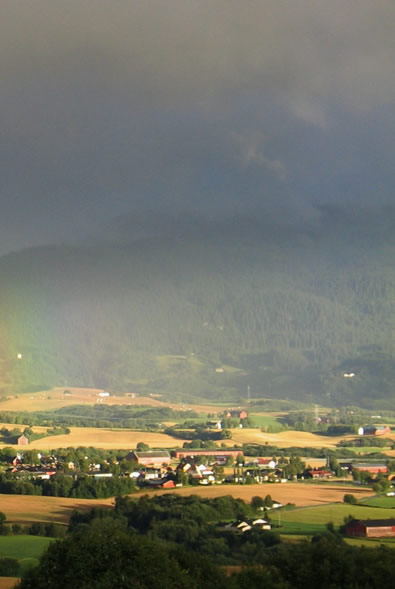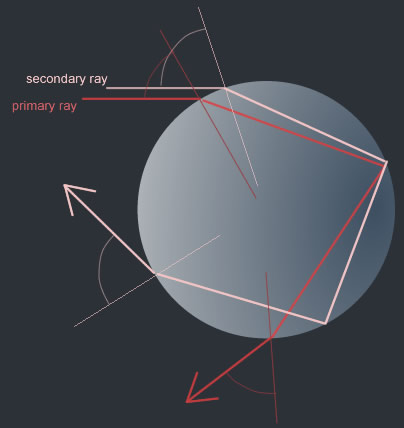At left a slice of the primary bow hugs the landscape. At right is the secondary bow with its reversed colours more widely dispersed.
The primary derives from a single reflection inside the raindrops. The secondary bow is the result of two reflections.
The widths of the bows are determined by the position where the rainbow forming rays enter and leave the drops. The closer the ray to the periphery, the greater is the 'angle of incidence'' - the angle between a ray and a perpendicular from the surface. The larger the incidence angle the more widely spread are the colours.
We see rainbow fragments when clouds prevent sunlight from shining on raindrops elsewhere along the rainbow cone � the 3D zone where droplets glint rainbow rays towards your eye.
|









